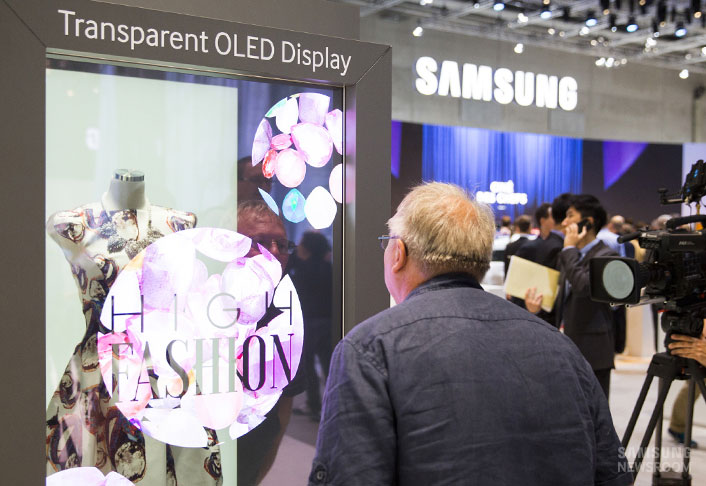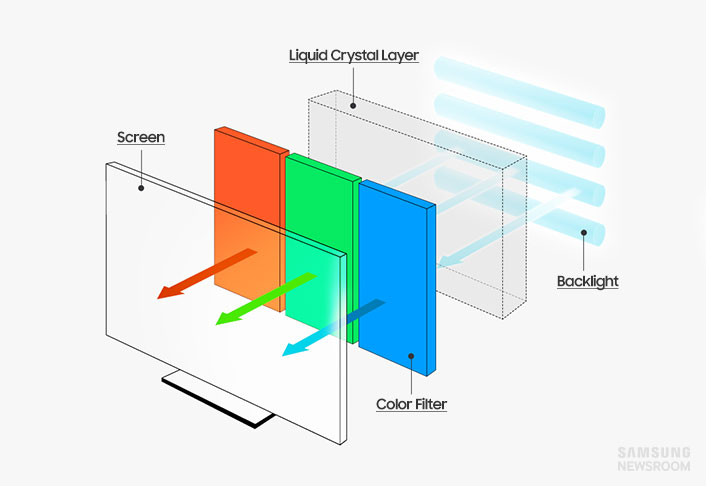Hot Tips for Buying a Cool TV, Part 2: Know Your Displays
on November 27, 2015
The second part of the Hot Tip series for buying a TV is about the display, the face of the television. Several display technologies have emerged over the years, including the Cathode Ray Tube (CRT), Plasma Display Panel (PDP), Liquid Crystal Display (LCD), and Organic Light Emitting Diode (OLED). Light Emitting Diode (LED) TV is a recent expression that is used often. To sort through the confusion, let’s take a straightforward look at the options and how to make your choice wisely.
A Short History of TV: The Magic of 3 Colors — RGB
TV has advanced together with our knowledge of how light can be generated. Since Scottish inventor John Logie Baird introduced the very first mechanical TV in 1925, marvelous advancements have been made to TV technology. But the foundation of color TV—the primary colors Red, Green and Blue (RGB)—is still the same as it was the first color transmissions were developed back in the 1930s and 1940s.
In fact, the emergence of the latest TV trend—thin, flat and sometimes curvy—started only about 10 years ago. In the history of TV, CRT TV dominated the market for a long period during the 20th century. It may be surprising that inside every cathode ray tube are electron guns. The TV functions when the electron guns fire three electron beams (one for each color) through a vacuum tube at a glass plate covered with a phosphorescent screen, causing the phosphors to emit light.
Despite being the dominant display technology for so long, CRT TVs have several limitations. Because the electron beams need to be the same length to all parts of the display, the screen curves away from the viewer, creating an uncomfortable surface for viewing. Additionally, a certain distance between the display and electron guns is essential, resulting in difficulty in making CRT TVs thin, and the glass screens were thick and heavy. As a result, CRT TVs have lost popularity as new display technologies arise.
TV has advanced together with our knowledge of how light can be generated. Since Scottish inventor John Logie Baird introduced the very first mechanical TV in 1925, marvelous advancements have been made to TV technology. But the foundation of color TV—the primary colors Red, Green and Blue (RGB)—is still the same as it was the first color transmissions were developed back in the 1930s and 1940s.
In fact, the emergence of the latest TV trend—thin, flat and sometimes curvy—started only about 10 years ago. In the history of TV, CRT TV dominated the market for a long period during the 20th century. It may be surprising that inside every cathode ray tube are electron guns. The TV functions when the electron guns fire three electron beams (one for each color) through a vacuum tube at a glass plate covered with a phosphorescent screen, causing the phosphors to emit light.
Despite being the dominant display technology for so long, CRT TVs have several limitations. Because the electron beams need to be the same length to all parts of the display, the screen curves away from the viewer, creating an uncomfortable surface for viewing. Additionally, a certain distance between the display and electron guns is essential, resulting in difficulty in making CRT TVs thin, and the glass screens were thick and heavy. As a result, CRT TVs have lost popularity as new display technologies arise.
The Rise of the Flat Screen
Beginning around the year 2000, the CRT era began to give way to lighter, flat screens. Before this time, it was difficult to imagine hanging a TV on the wall, but with PDPs and LCDs, wall-mounted TVs dramatically changed the interior of people’s homes.
The first alternative to CRTs to gain popularity was the PDP TV. As the name suggests, PDP uses plasma to generate light, making it thinner. Plasma is one of the four fundamental states of matter, but is not a solid, liquid or gas. It refers to the electrically neutral state when the number of positive and negative charged particles, or ions, is equal. The northern lights in the Arctic and lightning are two natural examples of plasma light. A PDP is made of two glass plates surrounding millions of phosphor-coated, gas-filled cells. When electric stimulation is produced, gas is discharged and light is emitted. Because PDPs use inert gas, there is little risk of explosion from this unique chemical reaction. There are two panes of glass, in front and behind, that protect from leaking gas. This makes PDP TVs slightly heavy, but safe.
PDPs were successful in making flat screen TVs more popular, due to a clear picture quality that was great for watching movies and sold at reasonable prices. Now, the number of PDP models is on the decline. PDPs use high voltage when discharging gas, resulting in high energy consumption and heat generation. A rather dark screen required additional power. Issues of longevity required even more voltage to generate a brighter picture. Limitations such as these made way for the next evolution in TV displays.
LCD displays addressed the disadvantages of PDPs, and have become the latest trend in TV technology. Almost 99 percent of TVs sold globally today are LCD-based TVs. Unlike PDPs and OLED TVs, which produce light on their own, LCD TVs use a backlight in the rear panel that passes through a color filter to produce a range of colors. The liquid crystal layer is located between the backlight and the color filter, blocking any color that must not go out.
Because LCD TVs use a separate backlight, the screens are brighter without sacrificing the lifespan of the TV. The human eye is more sensitive to brighter screens than darker screens, which is a major reason LCDs have become the most popular type of display today.
As for LED TVs, the explanation is fairly simple. They are simply LCD TVs that use small, long-lasting LEDs for backlight. It’s hard to believe that a fluorescent lamp is inside each display. Previously, LCD TVs used parts in the shape of fluorescent lamps for backlighting, such as cold cathode fluorescent lamp (CCFL). But these days, most LCDs use LED backlights, so the terms are almost interchangeable.
OLED is a technology that emerged more recently in the TV market. It uses millions of RGB organic LED pixels to generate light without the need of a backlight, producing more precise and deep blacks and colors. OLEDs can also be made flexible and just a few millimeters thick.
Why then do OLED TVs make up just a little over 0.1 percent of the market eight years after launching?
RGB OLED is very useful technology for mobile devices and today is most commonly used in smartphones.But OLED TVs currently in the market use white OLED (WOLED), a deviation from the RGB OLED. OLED displays produce colors on their own without the need of a color filter, but a color filter still exists in WOLED TVs. Unlike LCD TVs that use LED as backlighting, OLED displays produce their own backlighting. At this stage, verification concerning lifespan and durability of RGB OLED screens for big TVs has not been completed.

OLED is valuable technology for developing transparent displays due to its ability to generate its own light without a backlight and to be extremely thin. Samsung showcased its first transparent OLED display at IFA 2015 and now is preparing to commercialize it.
LEDs to Lead the Future of TV
When consumers choose a TV, they consider elements such as picture quality, price, design and life span. Different display technologies have their own strengths, but the TV technology that is currently satisfying consumers the most is LED display technology. Market research groups agree, predicting that LED TVs will lead the market for some time. This is due to the manufacturers who are maximizing the strengths of LED TVs by overcoming the limitations of TV.
The price of early LED TVs was expensive, reaching thousands of dollars, but has since fallen significantly, and today screens larger than 50 inches can be purchased for less than $1,000. Today’s screens can be even thinner than 1 centimeter and are ever more flexible. In the TV market, Samsung Electronics has been the No. 1 leader for 10 years, and is continuing to lead the way in the curved LED TV market.
In terms of picture quality, the essence of TV, the progress of LED TVs has been spectacular. Along with the development of software like the picture quality engine, LED TVs use technology like wide color gamut (WCG), resulting in the production of the widest color range among existing displays, and offering a picture quality that is remarkably realistic.
Several other technologies have been hailed as the “future of TV”—3D, holograms, foldable TVs and more. But Samsung believes that the near future lies in combining LED TVs with Internet of Things (IoT), providing the highest picture quality and a comfortable viewing experience.
The future of TVs is coming soon.
Read more:
Hot Tips for Buying a Cool TV, Part 3-B: Samsung TV Stands
Hot Tips for Buying a Cool TV, Part 3-A: Wall-Mount or Stand
Hot Tips for Buying a Cool TV, Part 1: Size and Viewing Distance




